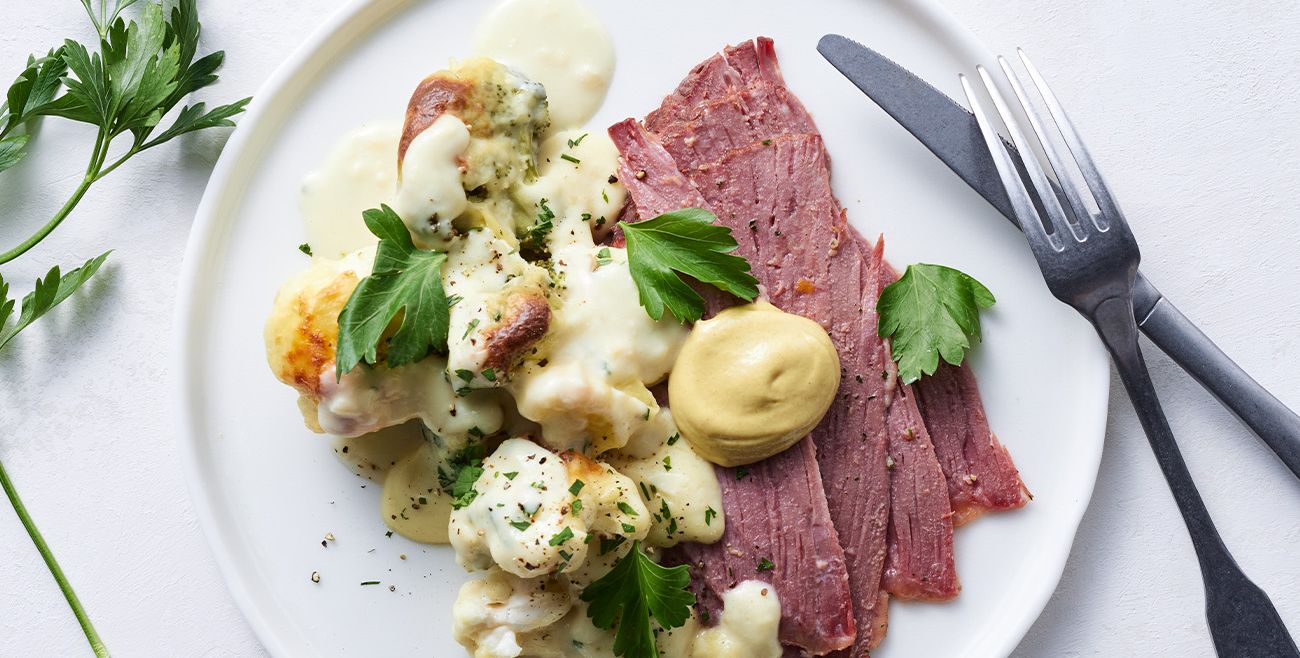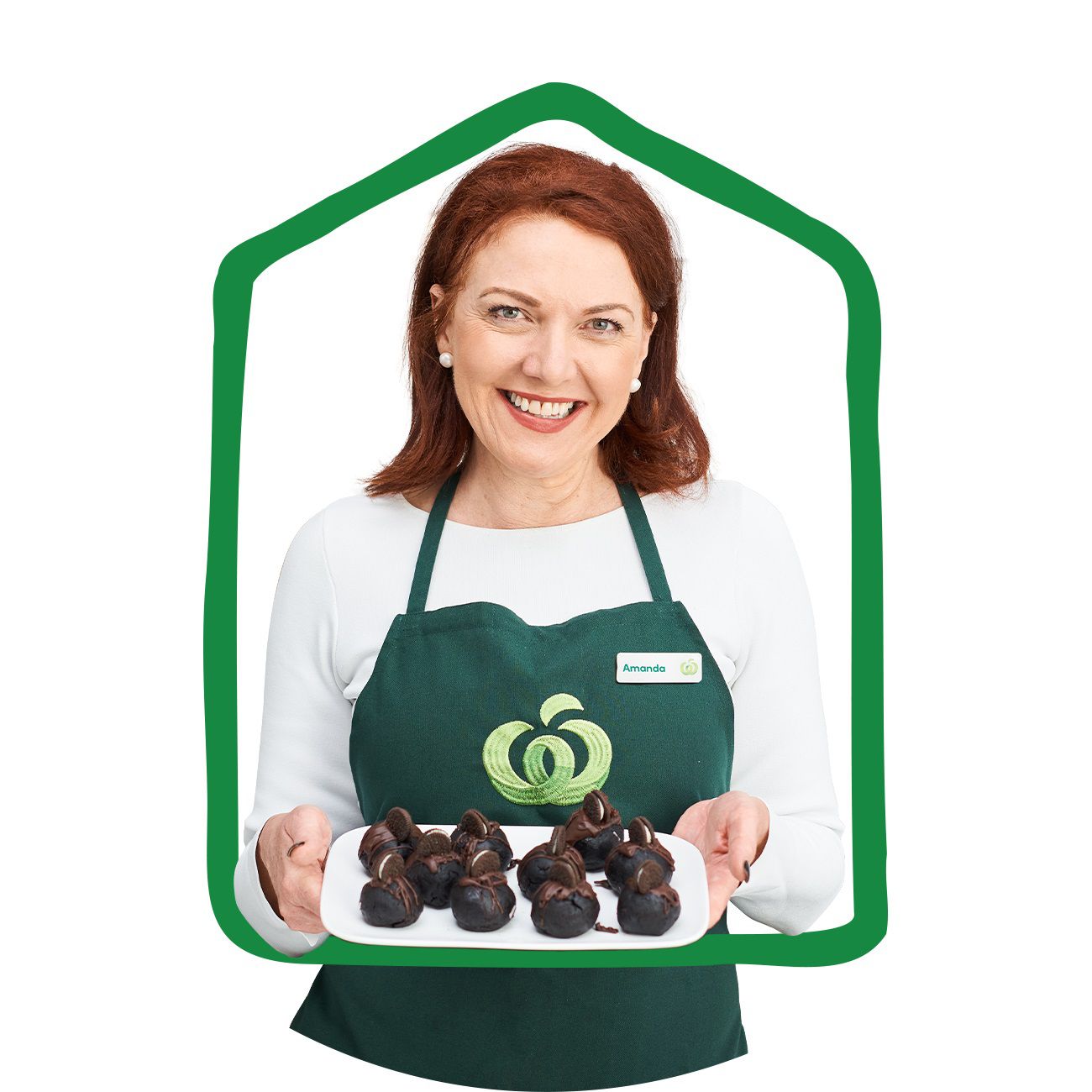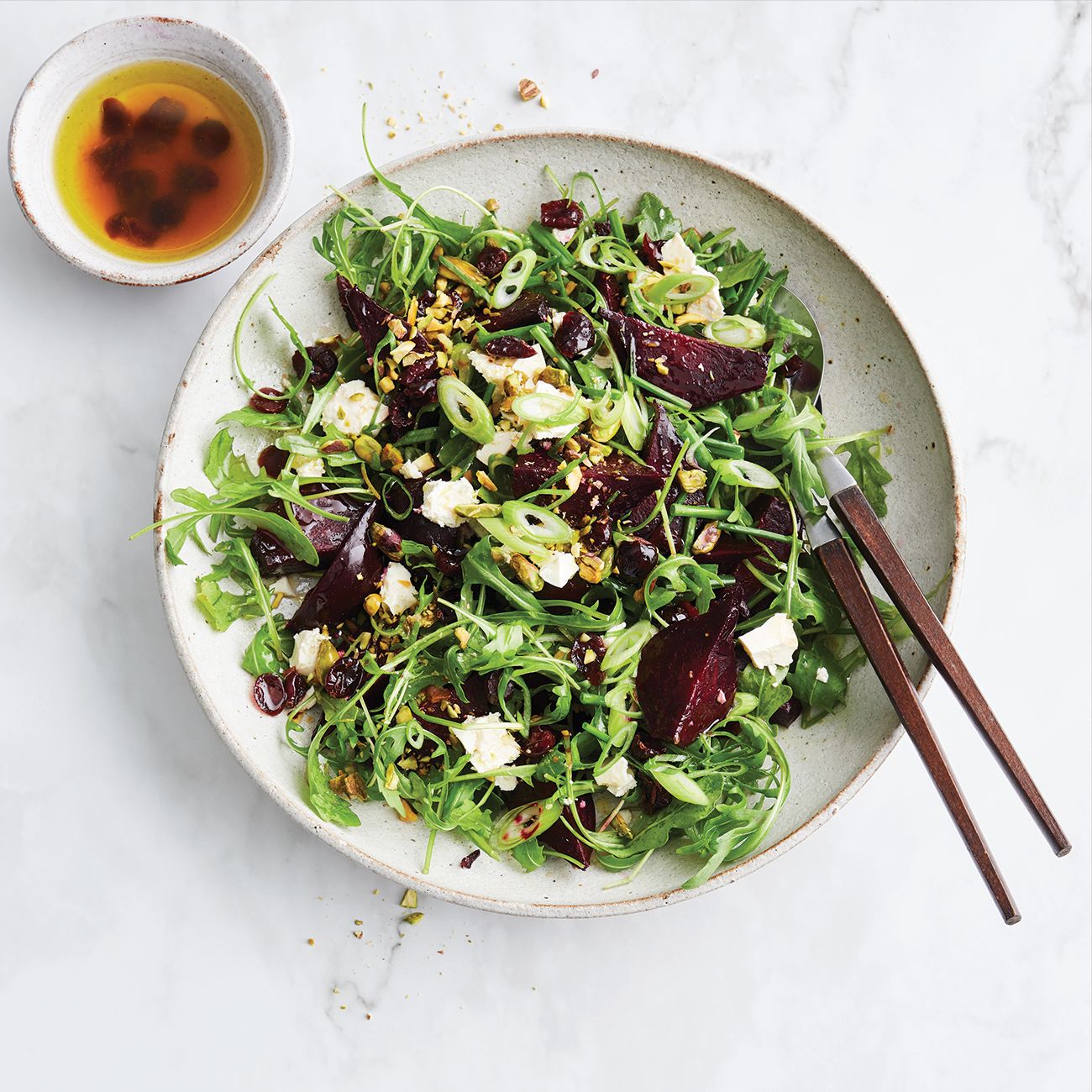Amanda’s great-grandmother’s corned beef is an affordable Easter game-changer


“Often, it's the simple things in life that get us over the line. To me, that's a good old-fashioned pot roast, such as corned beef. Corned beef holds a special place in my heart. It connects me to my ancestors and my Scottish roots.”
- Amanda
My family's recipe for corned beef – although adapted overtime – has been passed down through three generations as a cheap, comforting meal that brings us together around the dining table. My great-grandmother would feed our extended families on a Sunday, and – because there were usually around 20 to feed – meals had to stretch. The main attraction at that table was a small portion of beef, smothered in a creamy white sauce and served with roast cauliflower and mashed potato.
As time goes by, and the older I become, I feel it's necessary to pass these memories on to my son, Orlando, so that he feels a sense of connection with his ancestors.
The best thing about food is that a specific smell or taste can take us straight back to a significant time or place. The smell of corned beef simmering on the stove in a broth loaded with onion, carrot, celery, bay leaves and cloves transports me back to when I was a young girl in Mum’s kitchen.
Cooking cheaper cuts
There is a technique to cook cheaper cuts. Slow is the way to go. My father was once a butcher, and it was he who purchased the piece of silverside, which is what the beef cut is called at purchase. Then my mother stepped in, and it was game on. Mum always used the same pot; it was known as “the corned beef pot”. It was enormous and really, really heavy – so heavy that it took all of Dad’s strength to get it in and out of the cupboard!
“The smell of corned beef simmering on the stove in a broth loaded with onion, carrot, celery, bay leaves and cloves transports me back to when I was a young girl in Mum’s kitchen.”
- Amanda
An important step in cooking silverside is to place it in cold water and bring it to the boil, before draining that water off and topping up the pan with enough water to cover the silverside. This process removes some of the saltiness from the beef cut. The next important part to the process is adding the right combination of flavours.
Traditionally, my great-grandmother and Mum used carrot, celery, bay leaves, cloves, brown sugar and brown vinegar. These days, I am a tad more adventurous and use balsamic vinegar instead of brown. Then, I pretty much sit back and relax for the next three hours.
It’s important to rest the corned beef – which is what silverside is referred to once it’s cooked – in the cooking liquid for about 10 minutes after the cooking process is complete. This allows the meat to cool and relax.
Then you can think about the trimmings. Mum always made a bechamel-topped cauliflower bake that provided richness and creaminess alongside the beef. Most of the meat was devoured at mealtime, but I'd always look forward to my corned-beef sandwich the next day. To keep your meat tender, make sure to store it in its cooled cooking liquid when you pop it in the fridge.

Orlando loves home-cooked corned beef. These days, we usually accompany it with a roast beetroot, rocket and walnut salad. Just like me, he looks forward to his corned beef sandwich the next day – except he loads his version with pickles!
This dish is super simple and very easy to cook; it's basically a throw-everything-in-and-simmer sort of meal. Corned beef can divide a room. I think it's been given a rough reputation, so I urge you to give it another crack! Who knows: you might find yourself looking forward to that corned beef sandwich the next day, too!


